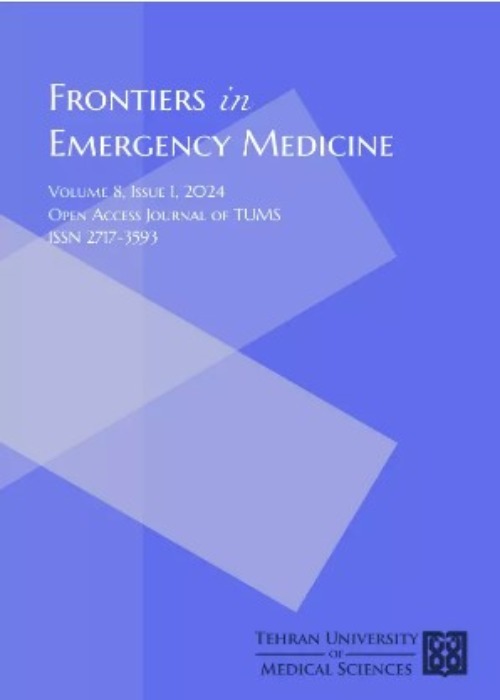Accuracy of Extended Focused Assessment with Sonography in Trauma (e-FAST) Performed by Emergency Medicine Residents in a Level One Tertiary Center of India
Author(s):
Article Type:
Research/Original Article (دارای رتبه معتبر)
Abstract:
Introduction
It could be claimed that extended focused assessment with sonography for trauma (e-FAST) is the most important use of ultrasound in every emergency department (ED). It is a rapid, repeatable, non-invasive bedside method that was designed to answer one single question, which is, whether free fluid is present in the peritoneal, pleural and pericardial cavity or not? This examination may also be used to evaluate the lungs for pneumothorax. Objective
The current comparative study was conducted to assess the accuracy and reproducibility of e-FAST performed by emergency medicine residents (EMRs) and radiology consultants (RCs) in multiple trauma patients.Method
This diagnostic accuracy study was conducted prospectively in patients presenting over a period of 12 months from January 1, 2013, to December 31, 2013 to the ED of Kerala Institute of Medical Sciences (KIMS), Kerala, India. All multiple trauma patients older than 18 years of age presenting within 24 hours of their traumatic event, who underwent both e-FAST and thoracoabdominal computed tomography (CT) scan were included. The e-FAST exams were first performed by the EMRs and then by RCs. The thoracoabdominal CT scan findings were considered as the gold standard. The results were compared between both groups to assess the inter-observer variability. The sensitivity, specificity, positive predictive value (PPV), negative predictive value (NPV), and accuracy were calculated both for EMRs and RCs.Results
In the study period, 150 patients with a mean age of 42.06 ± 18.1 years were evaluated (76.7% male). Only 19 cases (12.7%) had a history of fall from a height, and the others were admitted due to RTA. Thirty-four cases (22.7%) did not require surgery; but the others underwent various interventions. Both EMRs and RCs reported positive findings in 20 cases (13.3%) and negative findings in 130 cases (86.7%). The correlation of e-FAST done by EMRs with that by RCs was 100%. E-FAST exam had a sensitivity of 90.4%, specificity 99.2%, PPV 95.0%, NPV 98.4%, and accuracy 98%, both for EMRs and RCs.Conclusion
Based on the findings, the sensitivity, specificity, and accuracy of e-FAST exams performed by EMRs were equal to those performed by RCs. It seems that e-FAST performed by EMRs were almost accurate during the initial trauma resuscitation in the ED of a level one trauma center in India.Keywords:
Language:
English
Published:
Frontiers in Emergency Medicine, Volume:2 Issue: 2, Spring 2018
Page:
2
magiran.com/p1843860
دانلود و مطالعه متن این مقاله با یکی از روشهای زیر امکان پذیر است:
اشتراک شخصی
با عضویت و پرداخت آنلاین حق اشتراک یکساله به مبلغ 1,390,000ريال میتوانید 70 عنوان مطلب دانلود کنید!
اشتراک سازمانی
به کتابخانه دانشگاه یا محل کار خود پیشنهاد کنید تا اشتراک سازمانی این پایگاه را برای دسترسی نامحدود همه کاربران به متن مطالب تهیه نمایند!
توجه!
- حق عضویت دریافتی صرف حمایت از نشریات عضو و نگهداری، تکمیل و توسعه مگیران میشود.
- پرداخت حق اشتراک و دانلود مقالات اجازه بازنشر آن در سایر رسانههای چاپی و دیجیتال را به کاربر نمیدهد.
In order to view content subscription is required
Personal subscription
Subscribe magiran.com for 70 € euros via PayPal and download 70 articles during a year.
Organization subscription
Please contact us to subscribe your university or library for unlimited access!


